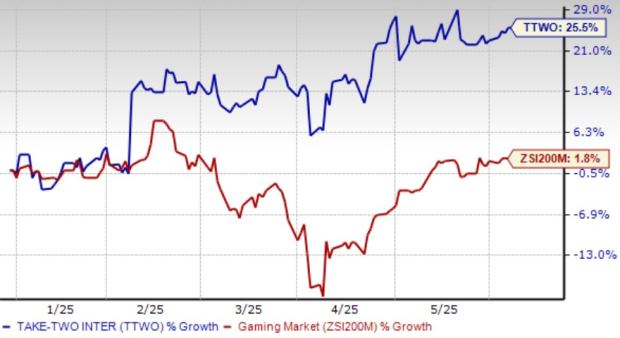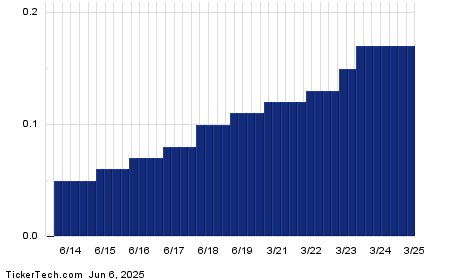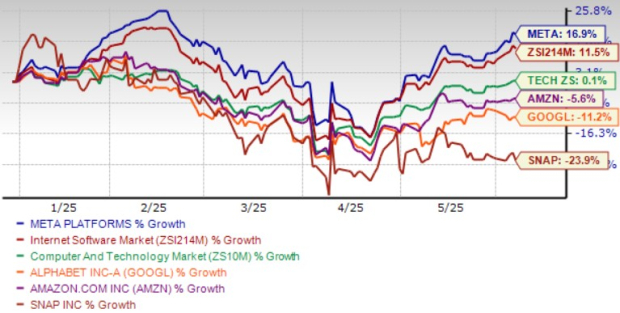
Image source: The Motley Fool.
Netflix (NASDAQ: NFLX)
Q4 2024 Earnings Call
Jan 21, 2025, 4:45 p.m. ET
Netflix Q4 2024 Earnings: Navigating Challenges and Achieving Subscriber Growth
Overview
- Prepared Remarks
- Questions and Answers
- Call Participants
Prepared Remarks:
Spencer Wang — Vice President, Finance, Investor Relations, and Corporate Development
Good afternoon, and welcome to the Netflix Q4 2024 earnings call. I’m Spencer Wang, the vice president of finance, investor relations, and corporate development. Today, I am joined by co-CEOs Ted Sarandos and Greg Peters, as well as CFO Spence Neumann. Please note that we will be making forward-looking statements, and actual results may differ.
Now, we’ll begin our Q&A session with Dan Salmon from New Street Research. Dan asks, “Have the wildfires in Los Angeles disrupted your productions? If so, how will this affect your cash content spending this year?”
Investor Considerations
Before considering an investment in Netflix, you might want to note the following:
The Motley Fool Stock Advisor analyst team has recently pinpointed what they think are the 10 best stocks to invest in right now—and Netflix isn’t on that list. They believe these other stocks could bring impressive returns.
For example, when Nvidia was recommended on April 15, 2005, if you invested $1,000 then, it would be worth $843,960 today!*
The Stock Advisor offers a step-by-step guide for success, which includes help on portfolio development and regular updates with two new stock picks every month. Since 2002, the service’s performance has outpaced the S&P 500 by more than four times.*
Learn more »
*Stock Advisor returns as of January 21, 2025
Addressing Challenges in California
Theodore A. Sarandos — Co-Chief Executive Officer
Thanks, and thank you, Dan. This is indeed a tough time for many in Southern California. The wildfires have severely impacted many in our industry, including our employees. Some of the hardest-hit areas, such as Pacific Palisades and Malibu, house many of our team members.
We’re committed to helping those affected and returning our cast and crew to work when safe. To answer your question, we anticipate no significant delays or financial impacts from these events as we progress into 2025. However, the personal disruptions are profound and cannot be overlooked. Our focus is on keeping production on schedule and being sensitive to those managing the fallout from the fires, including loss of homes and lives. The industry has faced numerous challenges over the past few years, from COVID to strikes, and now this crisis.
It’s crucial that we keep our projects on track and prioritize safety. We extend our immense gratitude to the firefighters and first responders who continue to battle the flames. Dan, specifically regarding your question, we foresee no tangible impact on cash or deliverables in 2025.
Subscriber Insights and Retention Rates
Spencer Wang — Vice President, Finance, Investor Relations, and Corporate Development
Now, let’s hear from Jason Helfstein of Oppenheimer. Jason asks whether the increase of 19 million subscribers was largely due to the “Jake Paul” event and the Christmas Day NFL games. He also inquires about subscriber retention after these events compared to typical post-holiday trends.
Gregory K. Peters — Co-Chief Executive Officer
In short, the answer is no. We’ve actually seen consistent strength across various content types and regions throughout the year. As we’ve noted repeatedly, no single title typically drives our subscriber growth.
While we had an exciting quarter with live events like the Jake Paul fight and NFL games, they only contributed modestly to our subscriber growth. Rather, the overall appeal of our diverse content portfolio led to increases. Highlights like “Squid Game” season 2 and other programming bolstered our subscriber numbers as well. The ability for multiple successful titles to engage our audience is key to our strategy.
Retention rates for those who joined for special events mirror the behavior of those attracted by our regular offerings, which is encouraging. Successful results stem from effective execution in all areas, including pricing and marketing, ensuring a consistent delivery across the board.
Currency Impacts and Financial Forecast
Spencer Wang — Vice President, Finance, Investor Relations, and Corporate Development
Next, we have a question from Steven Cahall at Wells Fargo. Spence, could you address how the strengthening U.S. dollar affects your margin targets? Also, what currency fluctuations do you anticipate being able to hedge in 2025?
Spencer Adam Neumann — Chief Financial Officer
Of course, Spencer. About 60% of our revenue comes from non-U.S. dollar currencies. We assess currency movements carefully to understand their potential impact on our financials.
Netflix Reports Strong Growth in Advertising Plans and Future Sports Rights Strategies
Financial Approach to Hedging
In terms of our financial strategy, we hedge approximately 50% of our exposure on a rolling 12-month basis. I want to emphasize that hedging is viewed as a short- to medium-term solution only. Our primary objective is to manage our company’s operating results through natural hedges whenever possible, along with adjustments to our pricing and cost structures over time. Essentially, our hedge program acts as a price averaging mechanism to mitigate the impact of foreign exchange (FX) fluctuations, thereby reducing volatility from significant near-term FX changes. This stability allows us to make informed investments for both the short and long term.
Insights on Ad Monetization Growth
Spencer Wang — Vice President, Finance, Investor Relations, and Corporate Development
The next question is from Brian Pitz of BMO Capital regarding our advertising monetization efforts. The rapid growth of our advertising user base and ad tech improvements over the past year have been noteworthy. What have been the key takeaways and obstacles in advertising monetization as we look towards 2025?
Gregory K. Peters — Co-Chief Executive Officer
We are enthusiastic about our advertising plan as it enables us to provide consumers a lower price option, thereby increasing accessibility and choice. This approach has attracted a wider audience to our diverse range of entertainment options. Notably, in Q4, our ads plan accounted for over 55% of signups in the respective countries. Membership for our ads plan has surged by about 30% from the previous quarter, building upon significant prior growth. The engagement levels of users on the ads plan mirror those using our standard plan, which signifies that our strategy is viable for both viewers and advertisers.
Looking ahead, we remain focused on enhancing our ad offerings to optimize monetization opportunities. In Q4, we surpassed our revenue targets for ads, achieving 100% growth year over year. We anticipate doubling that revenue again this year, indicating a promising trajectory for our ad monetization strategy.
While we acknowledge that challenges remain, our plan for growth appears straightforward and attainable. We feel optimistic about our continued expansion in ad revenue.
Advancements in Ad Technology
Spencer Wang
Jessica Reif Ehrlich from Bank of America has a follow-up question on our advertising capabilities. Do we have the necessary technology and tools to move beyond the initial stages of our advertising program?
Gregory K. Peters
We believe that 2025 is our pivotal year for transitioning from the early stages to a more mature advertising phase. We have successfully launched our own ad stack in Canada and are preparing for a wider rollout across our 12 ad countries, beginning with the U.S. in April. The key advantage of utilizing our own ad server is the flexibility it provides advertisers. This improvement simplifies the buying process and enhances the overall experience for both advertisers and users.
Over time, our first-party ad tech platform will enable us to leverage more data, enhance targeting, and improve measurement capabilities—addressing advertisers’ needs more effectively. This technological advancement also leads to a better experience for our customers. While we acknowledge significant work lies ahead, we are confident in our path for continued growth in revenue and aim to secure a larger share of the over $25 billion CTV ad spend.
Exploring Live Sports Rights
Spencer Wang
Moving on to content, Ben Swinburne from Morgan Stanley asks about the impact of NFL viewing numbers on our interest in full-season sports rights for Netflix. Are we more inclined towards acquiring such rights, or do we still find them unattractive?
Theodore A. Sarandos — Co-Chief Executive Officer
The impressive viewership for NFL games, including two record-breaking broadcasts, has encouraged us. The average minute audience surpassed 30 million viewers, while recent halftime performances have raised expectations. We value these outcomes and seek to diversify our programming, which includes live events and sports. However, the economic challenges associated with securing full-season sports rights remain significant. If we can align the financials with the leagues, we would certainly explore the option; yet, we currently prioritize live events as part of our broader strategy.
Royalties from WWE Performances
Spencer Wang
Rich Greenfield from LightShed has a similar inquiry regarding the influence of “WWE Raw” viewership on pursuing additional rights, such as UFC.
Theodore A. Sarandos
While I won’t comment specifically on UFC, it’s worth noting that our WWE viewership has been exceptional. In our first week, we reached approximately 5 million views, doubling the audience we anticipated. This promising start reinforces our commitment to enhancing our live event offerings and exploring opportunities in that domain.
“Monday Night Raw” Hits New Viewership Heights as Sports Strategy Expands
Strong Growth Abroad and Historical Success in the U.S.
“Monday Night Raw” is performing well on linear television, aligning with our expectations to grow the audience for WWE. Notably, non-live viewership surged by 25%, with growth seen primarily outside of U.S. time zones. This rise is particularly significant in the U.K., Canada, Mexico, Australia, and Brazil, all key markets. In the U.S., the viewership for “Monday Night Raw” has reached its highest point in five years, showcasing strong audience engagement. However, we remain focused on maintaining financial viability in this competitive landscape.
Acquiring FIFA Women’s World Cup Rights: A Strategic Move
In response to a question about the decision to acquire the FIFA Women’s World Cup rights for 2027 and 2031, Theodore A. Sarandos, Co-CEO, expressed confidence in this strategy. He stated that this event aligns perfectly with our goals. The Women’s World Cup is a significant television spectacle, having set multiple viewership records in 2023. As interest in women’s sports continues to grow, we’re excited to showcase these talented athletes and their stories, enhancing our portfolio of live sports programming.
“Carry-On”: Proving the Power of Netflix Releases
Addressing the success of “Carry-On,” which amassed 313 million viewing hours within two months, Theodore A. Sarandos noted that it demonstrates how movies can thrive without traditional theatrical releases. This film, which generated considerable buzz despite a modest marketing budget, highlights Netflix’s unique ability to promote content directly to its audience. Interestingly, the film has also sparked discussions around its cultural relevance, likening it to classic holiday favorites.
Shifts in Theatrical Strategy with “Narnia” Release
When asked about the plan to debut “Narnia” in theaters in 2026, Sarandos confirmed that this move does not signify a change in Netflix’s broader theatrical strategy. Rather, it is part of our approach to enhancing the movie experience. The limited two-week IMAX presentation serves to generate buzz and meet awards requirements while still prioritizing exclusive releases on Netflix. Sarandos expressed excitement for working with notable director Greta Gerwig on this anticipated project.
Future Price Increases and Market Strategy
Gregory K. Peters, Co-CEO, addressed inquiries concerning upcoming pricing adjustments in major markets. He emphasized that Netflix’s pricing philosophy remains consistent, aiming to provide substantial value while listening to member feedback through various engagement signals. Recent price changes in regions like EMEA, APAC, and LatAm have been well-received, and with our entry-level price point in the U.S. at $7.99, Netflix continues to present a compelling entertainment option. Currently, the revenue potential in our served markets is only 6%, suggesting significant opportunities for growth as we enhance our content offerings.
“`html
Netflix CEO Discusses Future Content Strategy and Engagement Tactics
Theodore A. Sarandos — Co-Chief Executive Officer
During discussions about price increases, Theodore Sarandos emphasized the importance of having quality content to justify such changes. He confidently pointed out that Netflix’s lineup for 2025 is strong, featuring returning seasons of major hits like “Wednesday,” “Stranger Things,” “Squid Game,” and “The Night Agent.” The film slate includes works from Oscar-winning directors like Guillermo del Toro and Kathryn Bigelow. Moreover, live events like the SAG Awards, Christmas Day football, and “Monday Night Raw” add excitement. Sarandos believes the strength of their content has never been better.
Spencer Wang — Vice President, Finance, Investor Relations, and Corporate Development
Moving on to engagement questions, Spencer Wang highlighted that recent third-party data shows stable engagement levels.
Is growing engagement a key priority for Netflix?
Theodore A. Sarandos — Co-Chief Executive Officer
Without a doubt. Sarandos explained that Netflix aims to entertain a global audience, measuring success by user engagement and viewership. He noted Bella and her team’s efforts in curating content that covers a broad spectrum to cater to diverse audiences across various moods and languages. Currently, Netflix members are streaming around 200 billion hours of programming annually, averaging two hours daily. Sarandos acknowledged there is still much work ahead to increase this engagement.
Gregory K. Peters — Co-Chief Executive Officer
Peters remarked on the correlation between engagement and other business metrics. Strong engagement often leads to better retention and acquisition rates, and the company is optimistic about continuous growth in these areas.
Spencer Adam Neumann — Chief Financial Officer
Neumann added that engagement is the foundation of Netflix’s business model, driving revenue and profits. He reminded listeners that an engagement report will accompany the earnings release starting with Q2, reinforcing the focus on performance metrics.
Theodore A. Sarandos — Co-Chief Executive Officer
In addition, the next engagement report is scheduled for February, ahead of the Q2 release.
Spencer Wang — Vice President, Finance, Investor Relations, and Corporate Development
Wang asked a broader engagement question from Justin Patterson of Keybanc regarding competition with short-form video platforms.
How is Netflix adapting to compete for engagement against short-form content?
Theodore A. Sarandos — Co-Chief Executive Officer
Sarandos emphasized Netflix’s goal to engage all audience types, especially younger viewers who may prefer short-form content. He highlighted that these audiences still appreciate longer films and television. Engaging projects ignites social media conversations surrounding shows, building excitement. Notable examples include “Wednesday,” which often generates buzz online. He reaffirmed Netflix’s commitment to high-quality storytelling and relevant programming.
Gregory K. Peters — Co-Chief Executive Officer
Peters expanded on Sarandos’s point, stating that Netflix sees itself as a distinct player in the entertainment ecosystem. It provides an avenue for storytellers from various backgrounds to showcase their talents, ensuring a rich and user-friendly viewing experience for consumers.
Spencer Wang — Vice President, Finance, Investor Relations, and Corporate Development
Wang then posed a question from Alan Gould of Loop Capital, inquiring about Netflix’s progress in the video game sector and its effect on subscriber engagement.
Gregory K. Peters — Co-Chief Executive Officer
Peters noted that they have made significant strides since launching their gaming initiative, and the company is optimistic about the potential impact of video games on subscriber growth and retention.
“`
Netflix Games: Expanding Their Interactive Universe
Highlighting Key Game Releases
Netflix has made significant strides in the gaming sector, successfully launching a variety of games. Among the notable titles, the critically acclaimed Oxenfree II has received attention, while Grand Theft Auto has generated tens of millions of downloads. Additionally, popular game adaptations of Netflix shows like “Too Hot to Handle,” “Emily in Paris,” “Selling Sunset,” and the new release, Squid Game: Unleashed, showcase Netflix’s commitment to leveraging their existing content into games. This approach not only prolongs audience engagement but also enhances the connection between the interactive and traditional storytelling mediums. The company is optimistic about its potential in this area and is refining its strategy under the leadership of Alain Tascan.
Future Game Developments
Looking ahead, Netflix plans to focus on more narrative-driven games based on their beloved IPs, which have proven to be fan favorites. The company is excited to introduce party and couch co-op games to be streamed directly to TVs, effectively modernizing family game nights and reinventing traditional TV game shows. Furthermore, Netflix aims to create a safe gaming environment for kids, ensuring that these offerings come without ads or in-app purchases—just included in the regular subscription.
The intention is also to broaden their catalog with more mainstream titles, including licensed franchises like GTA. These initiatives will complement homegrown content such as Squid Game: Unleashed, which has already reached No. 1 in action games across app stores in 107 countries and is anticipated to become Netflix’s most downloaded game. Early indications are showing positive effects on subscriber acquisition and retention among members who engage with the games.
Financial Insights on Content Investments
Spencer Wang, Netflix’s Vice President of Finance, addressed several inquiries during a recent earnings call. The company’s cash content spending is projected to increase from $17 billion in 2024 to approximately $18 billion in 2025. When asked about long-term spending levels, Chief Financial Officer Spencer Adam Neumann explained that Netflix is still far from reaching a point of equilibrium, particularly given its less than 50% penetration in connected households worldwide. As they plan future investments, the focus will be on strategic areas that promise impactful growth, specifically scripted TV series and original programming across various regions.
Operating Margin and Investment Strategies
Neumann highlighted how Netflix maintains a balance between revenue growth and strategic investments. The forecast for top-line revenue growth sits between 12% and 14%, with expected expense growth in the high single digits. Alongside this, Netflix plans to invest heavily in product and engineering teams, as well as marketing efforts to enhance their ad sales capabilities. This plan signals a commitment to strong financial management while aiming for long-term growth.
Spencer Wang – Vice President, Finance, Investor Relations, and Corporate Development
In closing the earnings call, Spencer Wang expressed gratitude to participants for their attention and shared enthusiasm for the future of Netflix’s gaming and entertainment ventures. The ongoing innovations within the company suggest a promising horizon, and the team looks forward to further developments in the upcoming quarters.
Duration: 0 minutes
Call Participants:
Spencer Wang — Vice President, Finance, Investor Relations, and Corporate Development
Theodore A. Sarandos — Co-Chief Executive Officer
Gregory K. Peters — Co-Chief Executive Officer
Ted Sarandos — Co-Chief Executive Officer
Spencer Adam Neumann — Chief Financial Officer
Greg Peters — Co-Chief Executive Officer
Spence Neumann — Chief Financial Officer
This article is a transcript of this conference call produced for The Motley Fool. While we strive for accuracy, there may be errors or omissions in this transcript. It is recommended that you conduct your own research, including listening to the call and reviewing the company’s SEC filings. Please see our Terms and Conditions for further details.
The Motley Fool has positions in and recommends Netflix. The Motley Fool has a disclosure policy.
The views and opinions expressed herein belong to the author and do not necessarily reflect those of Nasdaq, Inc.







